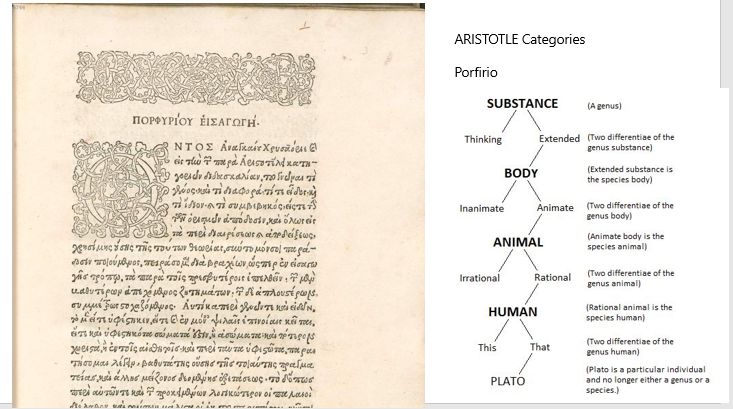

 |
Page
28
|
|
There was a huge expansion across the world of printed books. It was the first mass communication medium and the price fell so much that it allowed the production of cheap books and Newspapers. In 1501 Aldus invented italics and introduced the use of the semicolon and produced small format books (octavos) that could be slipped into the pocket ( the first paperbacks). But his chief concern was to reintroduce the Greek philosophers, starting with Aristotle, so they would never be forgotten. Above is Aristotle's Categories. The title translates as An Introduction to Porfirio. Porfirio is the tree of logic – the ordered sequence of ideas and objects as indicated on the right. There is a copy of this in the Charlecote library.
But this did not always happen. As Matt Ridley points out in his book
How Innovation Works (4th Estate2020) the Ottoman and Mughal empires
banned printing for 300 years In 1515 Sultan Selim I made the printing
of books punishable by death. This was because the caligraphers wanted
to preserve their businessand the priests wanted to defend their religious
monopoly. Eventually the Ottoman empire allowed foreigners to print in
foreign languages but it was not until 1762 that the imperial authorities
allowed secular but not religious books to be printed in Arabic. |